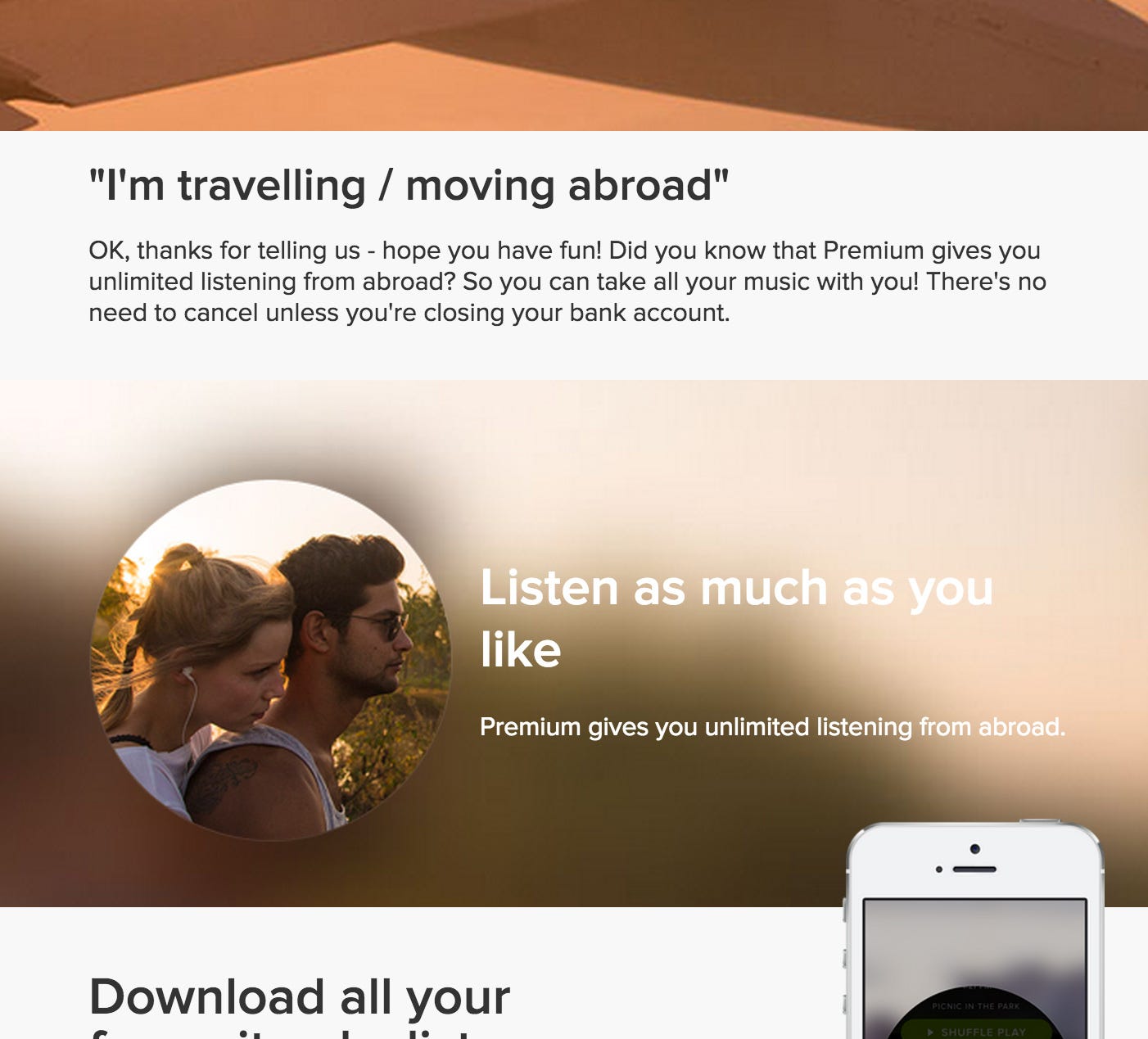To Keep a User, Sometimes You Have to Let Them Go
A s part of our cancellation process, the organization I work for has a simple questionnaire. One of the options customers can click to tell us why they cancelled is “other,” with an open text field. As I went back through the responses, I noticed some consistencies:
Traveling for the summer, will be back.
Got laid off, will be back when I find a job.
Have a pile of books I need to read.
These “other” responses had previously slipped under the radar, but now they were coming through loud and clear. Hoping to retain customers by keeping them on a path of continual engagement blatantly ignores the fact that people have lives beyond your product.
Our current approach to customer retention — improving the product itself — assumes that the inherent value of the product is what satisfies. We’re making the same mistake Bernoulli did over 200 years ago. What we’ve found is that, often, people are satisfied with the product but changes in their life situation have temporarily decreased its perceived utility. That decrease shifts the utility vs. cost equation in their minds.
Not all cancels are created equal
Don’t get me wrong, product improvements do help the overall experience. They’re an important piece of the puzzle, but they’re not the silver bullet for increasing customer retention.
We must redefine “retained customer.”
Loyalty does not mean a customer must stay with you indefinitely. If a user cancels in order to travel, then comes back to the service a month, or two, or three later, did you really ever lose them? A cancel is only a cancel if they don’t intend to come back.
The goal of any business is to create a great experience, and to support the needs of its customers. What if we embraced and respected the fact that people have lives outside of our products? What if we designed for the fact that the utility we deliver will ebb and flow with the changes in their life situation? How would we structure our products to support that?
Spotify starts down this road with their cancellation process. They include an option to say you’re traveling and then, before you make the final decision to cancel, they deliver a nice explanation of how they can support your trip. Here’s what it looks like:


However, Spotify’s approach to the user’s response that “I’m trying to save money” tries to convince the user that Spotify is the best use of his or her money, which I’d argue doesn’t respect a user’s need to manage his or her current life situation.


Think: User-centered retention
Take time to identify the kinds of external events that may temporarily impact the utility of your product. Then, develop retention strategies around those events.
Is your product impacted by nice summer weather, when people want to spend more time outside? Instead of fighting it by convincing them to come inside, develop features that help your users take advantage of the weather — or features that encourage them to take your product along. Or, accept that summer may be a low point and focus hard on having great content and features ready when temperatures drop. TV networks get it. Summer is a time for reruns.
If you have a cancel questionnaire, structure it to be as user-centric as it is product-centric. Give your users the option to tell you why they’re leaving instead of pushing them down a specific path. You might learn something.
Don’t assume everyone who leaves is a dissatisfied customer. Sometimes, life happens. If you make it hard for people to quit when they need to, or pester them to come back before they’re ready, you run the risk of frustrating someone who would’ve otherwise returned on their own.
Instead, respect that your users need to manage their own lives. Understand that your product is only a part of their lives, and you’ll be rewarded with loyal customers who return again and again.
